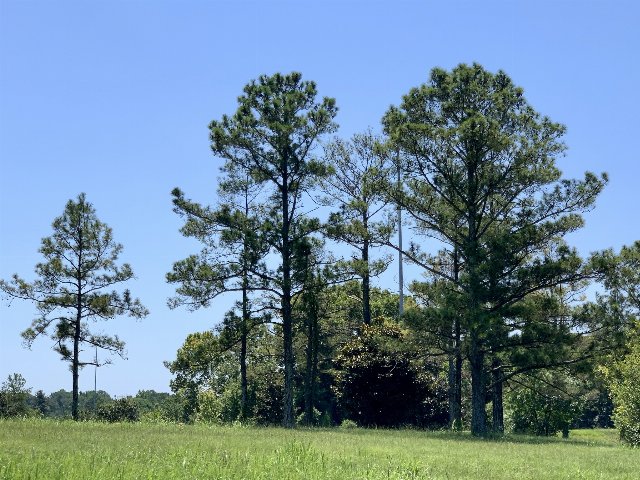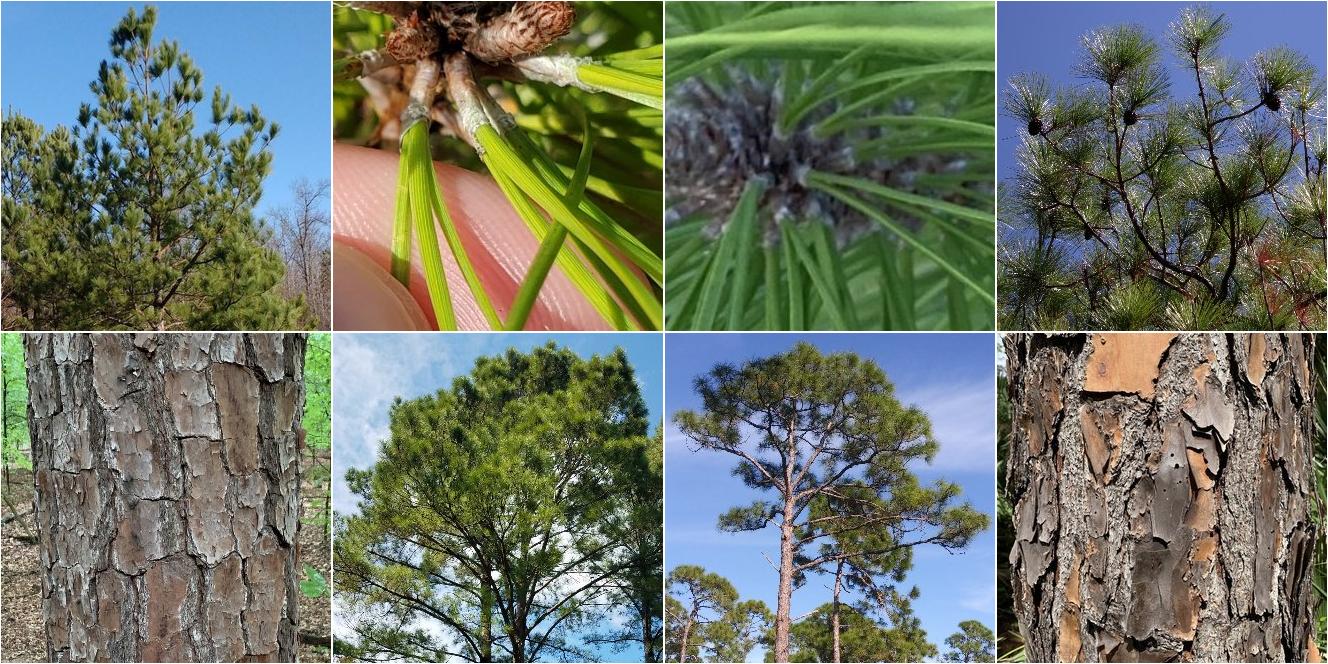Loblolly Pines (Pinus taeda), Vicksburg, Mississippi, in I-20 Median
View high resolution
This photo shows some loblolly pines (Pinus taeda) in Vicksburg, Mississippi, which is located in Warren County, MS. These pines were actually growing in the median of Interstate 20 at the interchange with US Highway 61, so they are not truly in a wild habitat. However, this more open habitat gives more of an opportunity to clearly observe their characteristics of form, which is why we selected this photo from open-licensed photos on iNaturalist.
Note the rounded crown shape on mature trees, but more pyramidal on the younger tree to the left. Note also the numerous small branches in the crown, mostly making strongly-ascending angles with the trunk, and many curving up slightly at the tips. Note the single central trunk, very straight and unbranched. The rounded crowns of these pines reflect its southerly distribution, where the climate usually does not bring heavy snowfall. A rounded shape is more efficient for capturing light, but causes problems farther north when heavy snow weights down branches, sometimes breaking them.
Note also the fairly lush foliage not only in the crown, but retained on some lower branches as well. Although this species is not particularly shade-tolerant, it retains more lower branches and foliage than some of the more fire-adapted southern pines such as shortleaf pine (Pinus echinata), longleaf pine (Pinus palustris), and slash pine (Pinus elliottii), all of which self-prune lower branches even when sunlight and water are abundant, as a way of preventing ground fires from turning into more destructive crown-destroying fires. As loblolly pine grows in moister, less fire-prone habitats, it is less adapted to severe fires, although it does still have some fire resistance adaptations including insulated bark and foliage that retains ample water and serves to deter fires from entering a stand.
The area where these pines are growing, even if it is not a natural habitat, is suitable habitat for this species as it is in the bottomlands adjacent to the Mississippi river, growing in a low, flat area exposed to full sun, conditions this species prefers.




